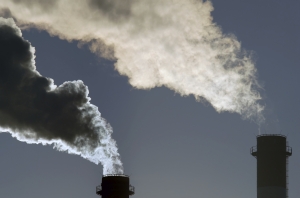Speculation continues to build that the Australian Government may announce a net-zero emissions target by 2050 ahead of COP26 in November – now just five weeks away – with Prime Minister Scott Morrison expected to settle the issue this week following his return from the United States.
On Friday, Treasurer Josh Frydenberg made the case to adopt a net zero target by 2050, warning that Australia must not be left behind in the flow of green capital to support the low carbon transition, suggesting that Australia will pay an economic cost if it does not match other major nations in reducing emissions to net zero by 2050, given the country depends heavily on imported capital to fuel the economy.
The speech is in the strongest endorsement to date from a senior cabinet minister on the question of net-zero emissions, with the government’s current position to meet net zero “preferably” by 2050 as it seeks to bridge a significant divide on climate policy within its own Coalition party room.
Nationals leader Barnaby Joyce last week suggested that the minor coalition party will have the final say on any federal government decision to support a net zero emissions, with several Nationals MPs remaining steadfastly against the federal government lifting its climate ambition.
The Prime Minister is reportedly negotiating with the Nationals leader on a deal which will contain a pay-off for the farming industry, with Mr Joyce said to be demanding “bucket loads of cash for the bush” to justify any agreement.
Last week, Liberal MP Dave Sharma backed Australia committing to an interim emissions reduction target of 40-45% by 2035, similar to the updated 2030 target proposed by the Opposition ahead of the 2019 federal election, yet 5 years later.
A net-zero target is likely, but no change in climate policy
Any commitment to net-zero emissions is expected to be accompanied by a plan outlining how net zero could be achieved via technological change, specifically via the government’s Technology Investment Roadmap, which seeks to accelerate the commercialisation of low emissions technologies such as carbon capture and storage and soil carbon, yet establishes no mechanism to drive the increased take-up of these technologies by industry.
Unlike other countries internationally, Australia’s current 26-28 per cent emissions reduction target by 2030 is not directly legislated, but has been adopted via Australia’s Nationally Determined Contribution (NDC) under the Paris Agreement.
Should the government ultimately adopt a net-zero emissions goal, the real-world impact of the target would therefore be negligible, with no direct linkage between the national target and Australia’s climate policy framework, specifically the Emissions Reduction Fund (now Climate Solutions Fund) and the Safeguard Mechanism. As a result, any new target would not translate into scaled up policy to put Australia on a pathway toward achieving net zero emissions.
This is particularly relevant for the safeguard mechanism, which sets ‘emissions baselines’ for Australia’s largest industrial facilities – covering around 30% of Australia’s national emissions (excluding the generation sector) – with increased climate ambition not translating into tighter settings for high emitting companies unless the target is embedded into the safeguard framework via direct regulation.
We therefore do not expect large emitting companies to face tighter emissions restrictions under the current Federal Government. While the government is expected to eventually bend to pressure to commit to net-zero by 2050, new rules to implement the target for industry are unlikely unless we see a change of government at the forthcoming federal election (latest by May 2022).
How Australia will meet its net-zero target – and more specifically and how industry emissions will be aligned with any new target – is therefore the elephant in the room for federal policymakers, with continued industry emissions output not compatible with any net-zero target – or the flow of local and international capital.
Corporate net zero targets will continue to support ACCU prices
As we have noted in recent updates, even in the absence of new federal policy, we continue to anticipate positive support for the local Australian Carbon Credit Unit (ACCU) market – subject to the possible introduction of Safeguard Mechanism Credits – with the adoption of a net-zero target likely to translate into increasing corporate voluntary demand for ACCUs, and a higher price environment.
As a result, net-zero targets at the corporate level are expected to continue to be the more direct driver of ACCU supply-demand fundamentals, and prices, with the federal government’s own national target not likely to influence emissions, or prices, until policy is developed to embed the target into the economy.
To access our latest carbon market outlook, including our scenarios for price development under net-zero emissions, please click here.
Kind Regards
The RepuTex Team
Australian Energy Markets















